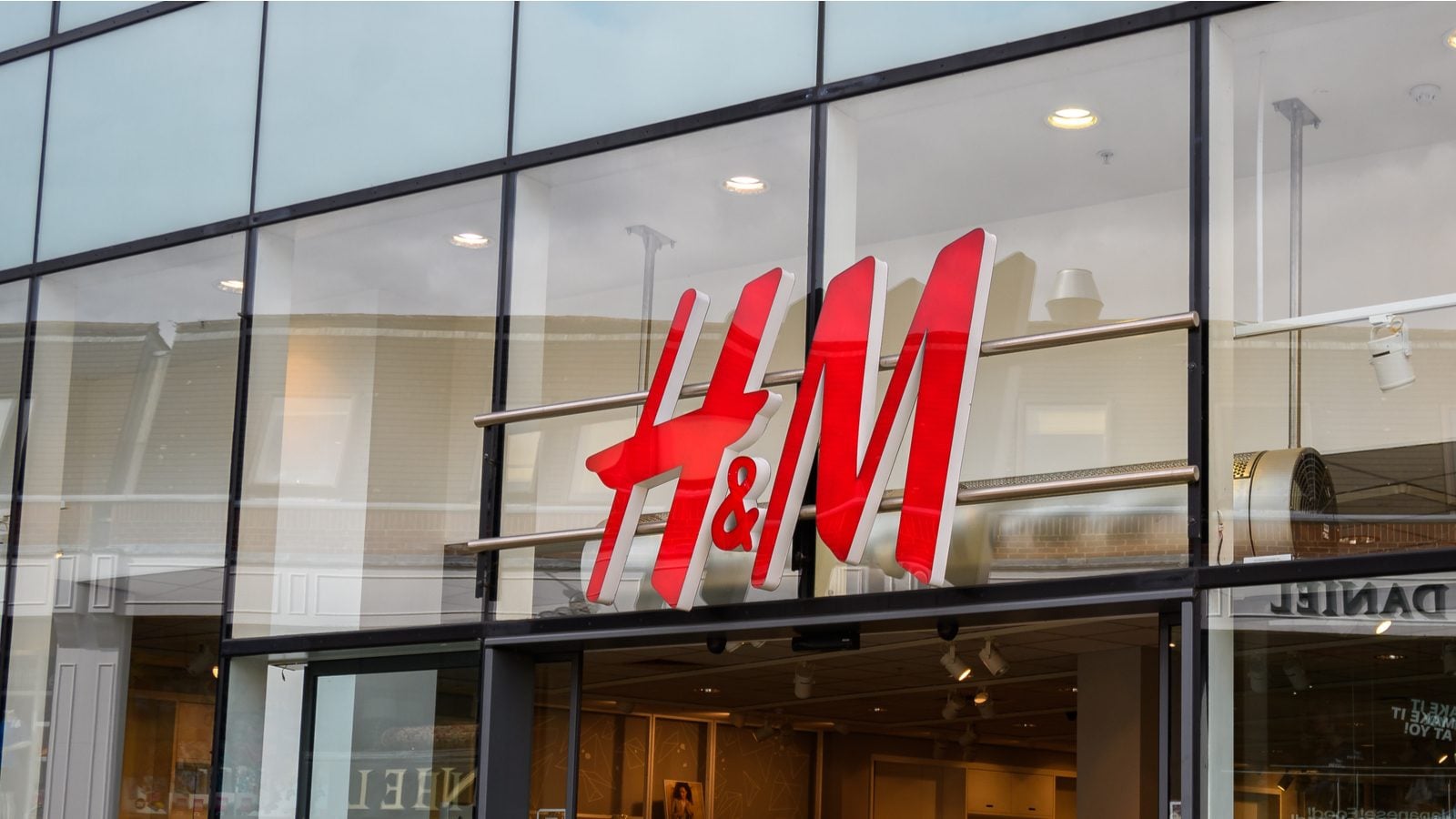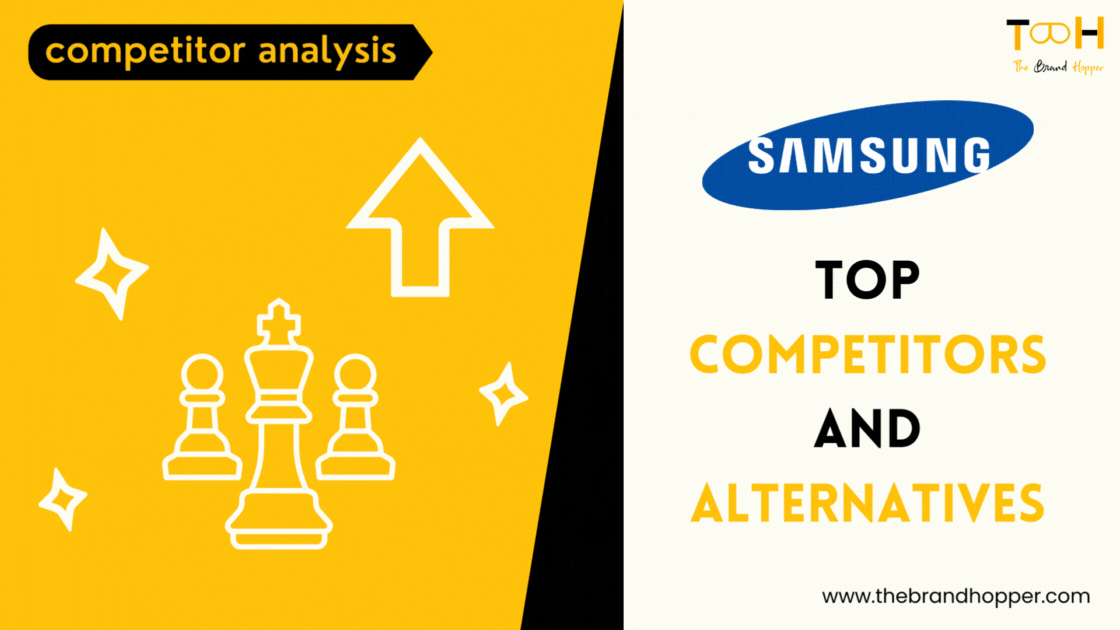H&M Hennes & Mauritz AB, or simply H&M, is a Swedish multinational clothing company that was founded in 1947 by Erling Persson. The company is headquartered in Stockholm, Sweden, and has over 4,700 stores in 75 countries. In this article, we’ll introduce the Marketing Strategies and Marketing Mix of Fast Forward retailer, H&M (Hennes & Mauritz AB).
H&M is known for its fast fashion business model, which allows it to quickly adapt to changing fashion trends. The company has a very short design-to-production cycle, which means that new designs can be in stores within a few weeks of being created. This allows H&M to offer trendy clothes at a relatively affordable price.
H&M’s success has been attributed to a number of factors, including its focus on customer demand, its vertically integrated supply chain, and its use of technology. The company is constantly monitoring customer feedback and using this information to inform its design decisions. H&M’s supply chain is also very efficient, which allows it to keep costs down. The company uses technology to track inventory levels and to optimize its production process.
H&M has been criticized for its environmental impact. The company has been accused of using sweatshop labor and of producing clothes that are not durable. However, H&M has taken steps to address these concerns. The company has implemented a number of sustainability initiatives, such as using recycled materials and reducing its water usage.
Overall, H&M is a successful fashion retailer that has been able to adapt to the changing needs of its customers. The company’s fast fashion business model has allowed it to offer trendy clothes at a relatively affordable price. H&M is also a leader in the use of technology, which has helped it to improve its efficiency and to stay ahead of the competition.
Here are some additional facts about H&M:
- The company’s name was originally Hennes (Swedish for “hers”), but it was changed to Hennes & Mauritz in 1968 after Erling Persson acquired the hunting apparel retailer Mauritz Widforss.
- H&M’s first store was located in Västerås, Sweden.
- The company’s logo is a yellow circle with the letters “H&M” written in black letters.
- H&M’s parent company, H&M Group, is the second largest apparel retailer in the world.
- H&M has over 4,700 stores in 75 countries.
- The company’s 2023 annual revenue is over $22.90 billion.
- H&M is a popular brand among celebrities and fashion bloggers.
Founding History of H&M
H&M’s story begins with the founding of “Hennes” in Västerås, Sweden, by Erling Persson in 1947. The store originally sold women’s clothing, and the name “Hennes” is the Swedish word for “hers,” emphasizing the store’s focus on women’s fashion.
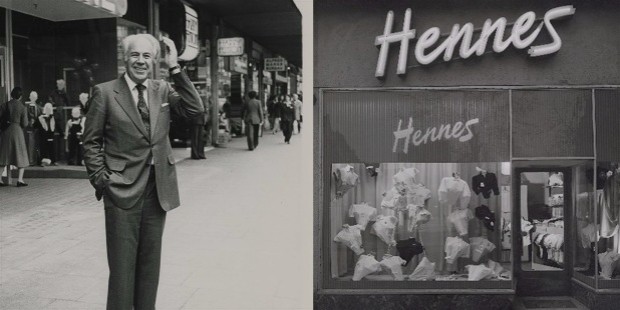
In 1968, Hennes acquired the hunting and fishing equipment retailer Mauritz Widforss. As a result, the name of the company was changed to Hennes & Mauritz AB (H&M). This acquisition marked the expansion of the brand’s product range to include men’s clothing as well.
During the 1970s, H&M adopted a fast-fashion model that involved regularly introducing new collections and quickly responding to emerging fashion trends. This approach allowed the company to stay ahead in the fashion industry and attract a growing customer base.
In the 1970s and 1980s, H&M expanded beyond Sweden’s borders and opened its first stores in Norway and Denmark. The brand’s affordable and stylish offerings resonated with consumers in these new markets, paving the way for further expansion.
H&M’s international expansion gained momentum in the 1990s as it entered several new markets, including the United Kingdom, Germany, and the United States. The brand’s expansion was characterized by a series of successful store openings in major cities and shopping destinations.
Recognizing the significance of e-commerce, H&M ventured into online retail in the early 2000s. The company established a robust online platform, enabling customers worldwide to shop its collections from the comfort of their homes.
H&M gained widespread attention and excitement through its collaborations with renowned fashion designers and high-end brands. These limited-edition capsule collections, featuring collaborations with designers such as Karl Lagerfeld, Stella McCartney, and Balmain, created a sense of exclusivity and generated immense buzz for the brand.
H&M’s international expansion continued at a rapid pace, with the brand reaching new markets across Europe, Asia, the Middle East, and beyond.
H&M’s founding history is a remarkable journey of growth and adaptation. From its origins as a women’s clothing store in Sweden to becoming one of the world’s largest and most recognizable fashion retailers, H&M’s commitment to fashion-forward designs, accessible pricing, and sustainability efforts has secured its position as a leading player in the global fashion industry.
Marketing Strategies of H&M
H&M is renowned for its effective marketing strategies, which have contributed to its success as a leading global fashion retailer. The brand’s marketing efforts are focused on engaging customers, staying ahead of fashion trends, and providing a seamless shopping experience. Let’s delve into the key marketing strategies employed by H&M in detail:
Fashion-Forward Designs and Fast-Fashion Model:
H&M’s marketing strategy revolves around its commitment to offering fashion-forward designs at affordable prices. The brand’s fast-fashion model allows it to quickly respond to emerging trends and introduce new collections frequently. This approach keeps the brand’s offerings fresh and enticing for customers, encouraging repeat visits and purchases.
Fashion-Forward Designs
The first aspect of H&M’s marketing strategy involves creating trendy, high-quality garments that align with current fashion trends. The company invests heavily in research and development to stay ahead of the curve when it comes to design innovation. This allows them to offer fresh, cutting-edge pieces that attract customers seeking contemporary style.
To achieve this goal, H&M collaborates with renowned fashion designers like Alexander Wang, Balmain, and Versace to introduce limited edition capsule collections. These exclusive lines not only showcase the latest fashion trends but also help build excitement and anticipation among shoppers.
Moreover, H&M frequently releases new arrivals to keep up with evolving consumer desires and ensure they remain relevant in the ever-changing fashion industry. This constant influx of new merchandise keeps customers coming back to see what’s new and exciting.
Fast-Fashion Model
The second element of H&M’s marketing strategy revolves around its fast-fashion model, which focuses on quick production cycles and efficient supply chain management. This enables H&M to bring new designs to stores quickly while maintaining affordability.
This approach helps H&M capitalize on fleeting fashion trends before they fade away, ensuring that customers always find something appealing during their visits. It also reduces excess inventory and minimizes waste, contributing to sustainability initiatives.
Additionally, H&M uses technology to streamline operations and enhances efficiency throughout the entire value chain. They employ digital tools like artificial intelligence and machine learning to optimize logistics, reduce lead times, and minimize supply chain processes. AI algorithms analyze large amounts of data collected from various sources such as weather forecasts, social media sentiment, and point-of-sale transactions to predict demand patterns and adjust production accordingly. Machine learning models are used to automate decision making related to inventory allocation, transportation routing, and warehouse optimization.
Product Diversification:
The key component of H&M’s product diversification strategy is its extensive variety of clothing options across different categories and price points. For instance, H&M offers a broad assortment of women’s, men’s, teenagers’, children’s, and baby clothes along with accessories like bags, shoes, jewelry, and beauty products.
Within each category, there are subcategories featuring different styles, fabrics, colors, and sizes. Customers can choose from classic basics, seasonal must-haves, and designer collaborations, providing ample choice for individuals with varying preferences and budgets.
Another aspect of H&M’s product diversification strategy includes launching limited edition collections created in collaboration with famous fashion designers or influencers. Examples include the & Other Stories collection co-designed by external creative talents, the x Karlie Kloss athleisure line developed with the supermodel, and the Olivia Colman collaboration inspired by her character in the film “Hyde Park on Hudson.”
These limited editions generate buzz and exclusivity, encouraging customers to visit physical stores or browse online to purchase the latest offerings. Such partnerships also foster a sense of community and engagement among fans of both H&M and the featured personalities.
Collaborations with Designers and Influencers:
Collaborations with renowned designers and influential personalities have been a crucial element of H&M’s marketing approach since 2004 when the retail giant first introduced its designer collaborations program called “H&M Studio“. Since then, H&M has continued to evolve this strategy by partnering with various designers and influencers to create unique and exclusive collections that cater to diverse customer segments while maintaining its core value proposition of affordable luxury.
The success of such collaborations lies in their ability to drive foot traffic to brick-and-mortar locations and increase online sales via social media hype and shoppable content. By leveraging the influence of celebrities and industry experts, H&M creates a sense of urgency and desirability around its limited-time collections, which helps to build anticipation and encourage purchases.
In addition, collaborations enable H&M to tap into emerging trends and capitalize on current consumer interests without compromising its existing brand identity. They allow the retailer to experiment with new silhouettes, prints, and color palettes while ensuring that all collections remain accessible and attainable for its target demographic.
Overall, collaborations with designers and influencers play a vital role in helping H&M stay relevant and competitive in today’s fast-paced fashion landscape where speed-to-market and agility are critical factors for long-term success.
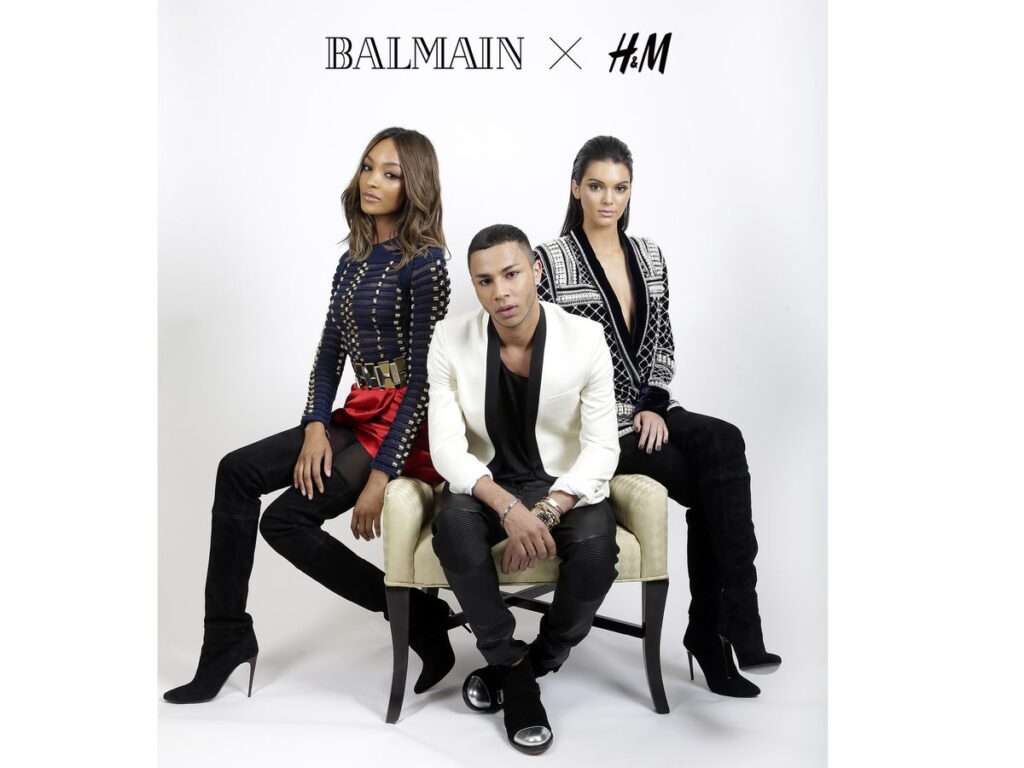
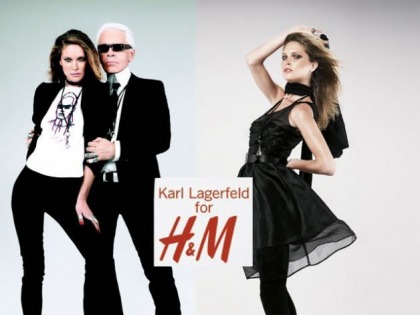
Inclusive Marketing and Diversity
Since its founding in 1947, H&M has grown from a small Swedish clothing store to one of the largest global apparel companies. To continue thriving in the highly competitive fashion industry, H&M has embraced inclusive marketing strategies and prioritized diversity in its business operations and marketing initiatives.
Embracing Diversity in Advertising Campaigns
One key aspect of H&M’s inclusive marketing strategy involves featuring models of different ages, sizes, gender expressions, and ethnic backgrounds in its advertisements. For example, H&M’s Spring/Summer 2023 campaign featured transgender model and activist Munroe Bergdorf alongside other diverse faces like Aya Suba and Alton Mason. This approach reflects H&M’s commitment to representing the broad spectrum of human identities and making everyone feel welcome in its stores.
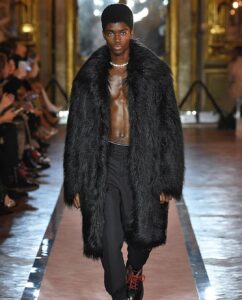
Supporting Diverse Talent Within the Company
To promote diversity internally, H&M offers internships and scholarships to students from underrepresented communities. It also works closely with organizations like the British Fashion Council’s NewGen Committee to support young designers from minority groups. By nurturing diverse talents within the industry, H&M contributes to creating a more representative future for fashion.
Addressing Environmental Concerns and Sustainability
Another aspect of H&M’s inclusive marketing strategy focuses on addressing environmental concerns and promoting sustainability. The brand regularly releases sustainability reports outlining its progress towards reducing its impact on the planet. In recent years, H&M has pledged to use only sustainably produced cotton by 2020 and achieve climate positive production by 2030. By incorporating environmental stewardship into its marketing messaging, H&M appeals to conscientious consumers who want to make a difference through their shopping choices.
Digital Marketing and E-commerce:
As a multichannel retailer operating in today’s fast-paced, digitally driven world, H&M recognizes the importance of leveraging digital marketing and e-commerce to reach new customers, build brand awareness, drive sales, and improve the overall customer experience. Here are some ways H&M implements this marketing strategy:
Developing a Robust Online Presence
H&M maintains a strong online presence through various digital channels such as its website, blog, Instagram, Facebook, Twitter, Pinterest, YouTube, and WeChat accounts. Each platform features curated content tailored to the respective audience demographic, ensuring seamless integration across all channels.
Creating Engaging Social Media Content
The brand creates shareable, visually appealing, and interactive content across its social media profiles to attract and retain followers. From user-generated content (UGC) to influencer collaborations, H&M keeps its social media feeds fresh and relevant while building a community around its brand.
Implementing Search Engine Optimization (SEO) Techniques
H&M employs SEO best practices to optimize its website for search engines like Google. This includes keyword research, meta tags, header tags, internal linking, and image optimization. By improving organic visibility, H&M increases traffic and potential sales without relying solely on paid ads.
Offering Omnichannel Shopping Experience
Customers can shop at H&M both offline and online thanks to the omnichannel approach. With options to buy online and pick up in-store or vice versa, shoppers enjoy flexibility and convenience when interacting with the brand. Plus, H&M integrates its physical stores into its digital offerings via services like click & collect or virtual fitting rooms.
Enhancing Customer Retention through Loyalty Programs
H&M runs several loyalty programs designed to reward frequent customers and encourage repeat purchases. Examples include the H&M Club, which offers exclusive benefits and discounts to members; and the H&M Credit Card program, which provides cardholders with perks such as early access to sales events, free shipping, and double points earning opportunities. These initiatives help keep customers engaged and invested in the brand over time.
Incorporating Email Marketing Campaigns
Email remains an essential communication channel for H&M. The brand sends out regular newsletters featuring promotions, new arrivals, and style inspiration. Personalized subject lines and dynamic content further increase open rates and conversion potential.
Streamlining Mobile Commerce
Recognizing the growing popularity of mobile commerce, H&M ensures its website is optimized for smartphones and tablets alike. Responsive design, simplified navigation, and one-click checkout processes make shopping on mobile devices effortless.
Harnessing Video Marketing Potential
From fashion shows to behind-the-scenes footage, H&M produces video content to entertain and inform its audience. By incorporating videos onto its website, social media, and even product pages, H&M maximizes exposure and engagement.
Embracing Virtual Reality and Augmented Reality Technologies
In recent years, H&M has experimented with VR and AR experiences to bring its collections to life. Whether through immersive fashion shows or augmented try-on tools, H&M explores innovative ways to merge technology and fashion.
Overall, H&M effectively blends traditional marketing tactics with cutting-edge strategies to create a cohesive and effective marketing plan. Its focus on digital marketing and e-commerce allows the brand to connect with customers globally while staying agile enough to adapt to evolving consumer trends and preferences.
Social Media and Influencer Partnerships:
H&M understands that social media plays a crucial role in reaching and engaging consumers. As such, they have developed a comprehensive social media strategy that involves partnering with influencers and creating shareable content. Here are some key aspects of their approach:
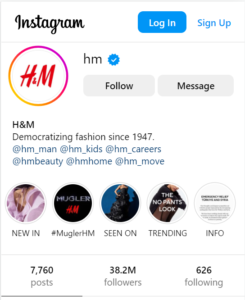
Building a Community Through User Generated Content (UGC):
One way H&M fosters engagement with their target audience is by encouraging users to share photos of themselves wearing H&M clothing using specific campaign hashtags. They often repost these images on their official social media accounts, providing recognition and potentially driving sales through word-of-mouth recommendations.
Collaborating with Micro-Influencers:
While working with celebrity influencers can be expensive and may not always yield significant returns, H&M also partners with micro-influencers who have smaller but highly engaged audiences. These individuals typically showcase H&M products within their daily lives or during special occasions, offering authenticity and relatability to their followers.
Leveraging Influencer Takeovers:
To gain additional traction and introduce new styles to existing fans, H&M occasionally hands over control of their social media accounts to select influencers. During these takeover periods, the chosen influencer shares posts highlighting their favorite pieces from current collections while adding their unique perspective and creativity.
Utilizing Short Videos and GIFs:
Short clips and animations tend to perform better than static images on social media platforms due to their ability to capture attention quickly. Therefore, H&M regularly incorporates short videos and GIFs into their social media content mix to promote new arrivals, seasonal trends, and limited edition collabs.
Hosting Interactive Contests:
Another method H&M employs to generate buzz and drive traffic to their online store is by hosting interactive contests across various social media channels. For instance, they might ask followers to submit their best OOTD (outfit of the day) photo featuring H&M apparel for a chance to win a gift card or merchandise bundle. This type of user-generated content helps build excitement around new releases and strengthens customer relationships through participation and rewards.
Capitalizing on Trending Topics and Events:
By keeping up with cultural happenings and relevant conversations, H&M can tap into timely moments to boost engagement and attract new customers. For example, they might release a capsule collection inspired by a popular movie or collaborate with artists performing at music festivals. Such efforts demonstrate their understanding of modern pop culture and willingness to adapt to contemporary interests.
Focusing on Visual Storytelling Across Platforms:
Consistency is critical when maintaining a strong visual identity across multiple social media channels. To achieve this consistency, H&M develops visually appealing themes and color schemes that resonate well with their target demographic. From Instagram carousels displaying coordinated looks to TikTok videos demonstrating styling tips, each post aligns with the overall aesthetic and messaging guidelines set forth by the company.
Driving Sales With Time-Limited Promotions:
Similar to other retail brands, H&M leverages social media advertising to promote exclusive deals and discounts available only for a limited period. By creating urgency and exclusivity around these offers, they motivate impulse purchases and entice customers to return frequently for future promotions.
Encouraging User Feedback and Dialogue:
Two-way interaction between H&M and their followers is vital for building trust and retaining customers. By actively responding to comments and messages, the brand demonstrates attentiveness to customer needs and desires. Additionally, they sometimes solicit feedback directly through polls or surveys shared via social media. This open communication helps shape product development and ensures customer opinions are heard and valued. Overall, H&M’s social media presence effectively blends fashion inspiration, community engagement, and sales-driven tactics to appeal to their diverse customer base worldwide.
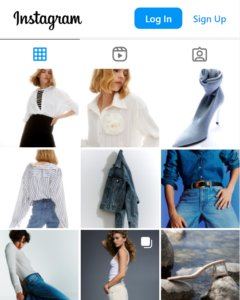
Store Experience and Visual Merchandising:
H&M places considerable emphasis on its in-store experience. The brand’s stores feature modern and visually appealing layouts, making it an enjoyable and inspiring shopping destination. Effective visual merchandising and product displays highlight the latest fashion trends and encourage impulse purchases.
Store Design and Layout:
The interior design of an H&M location reflects the brand’s minimalistic yet chic style. Clean lines, monochromatic color palettes, and sleek fixtures characterize the space, which creates a modern ambiance that complements the clothing assortment. The store layout is carefully planned to ensure easy navigation and maximum visibility of featured items.
- Zoning: H&M divides its floor plan into distinct zones based on product categories (e.g., women’s wear, men’s wear, accessories). Each zone features appropriate lighting levels, display materials, and mannequin poses tailored to the category.
- Color Blocking: H&M uses vibrant colors to draw attention to focal areas or new arrivals. By grouping similar hues together, they create a cohesive look that guides shoppers through the store.
- Seasonal Displays: Timely updates to the store layout keep the environment fresh and exciting. During major sale events like Black Friday or end-of-season clearances, H&M rearranges the store to maximize impact and move inventory.
Visual Merchandising Techniques:
Visual merchandising refers to arranging products in a manner that stimulates consumer interest and drives sales. H&M masterfully applies several methods to optimize the presentation of goods:
- Mannequins and Formatting: H&M skillfully positions mannequins to showcase outfits and silhouettes that flatter different body types. Clothes are folded neatly and organized by color families to make it easier for customers to find what they need.
- Limited Edition Collections: Displaying exclusive ranges separately from mainline offerings creates a sense of luxury and exclusivity. These collections often feature unique fabrics, intricate designs, or collaborations with high-end labels, making them stand out from standard stock and encouraging premium spending.
- Sustainability Efforts: As part of its commitment to sustainable practices, H&M incorporates eco-friendly elements into store design and visual merchandising. For instance, recycled materials may be used in displays or signage highlighting conscious initiatives. By showcasing environmental responsibility, H&M fosters a positive reputation and sets an industry benchmark for responsible retail operations.
Seasonal Transitions: Seasonal transitions keep the store looking fresh and invite repeat visits. H&M regularly refreshes its visual merchandising to match current fashion trends and weather conditions. During key transition periods like back-to-school or holiday seasons, the store receives extra attention to create eye-catching displays that capture shoppers’ imagination. - Impulse Purchases: To increase unplanned purchases, H&M strategically places small accessories or last-minute additions near checkout counters or narrow aisles. These items are usually affordably priced and complementary to existing wardrobe essentials, tempting customers to grab something extra before leaving the store.
- Atmosphere and Ambience: H&M understands the importance of setting the right mood in its stores. Soft background music, subtle scents, and well-lit fitting rooms contribute to a pleasant shopping experience. Employees are trained to be helpful without being overbearing, further enhancing the welcoming atmosphere. All these employees receive training on maintaining a friendly demeanor while assisting customers. This approach helps build trust and comfort in the shopping process, ultimately leading to increased customer satisfaction and loyalty.
Seasonal and Themed Campaigns:
H&M utilizes seasonal and themed campaigns as a marketing strategy to drive sales and engagement with their target audience. Here’s a detailed explanation of this technique:
Seasonal Campaigns:
H&M aligns its marketing efforts with natural calendar cycles such as spring/summer and fall/winter seasons. To stay relevant during these times, the brand develops creative concepts that resonate with consumers. For example, during winter months, H&M might focus on warm clothing options and accessories like scarves, gloves, and boots. Conversely, come summer, the emphasis shifts to lighter fabrics, swimwear, and beach-themed apparel. By catering to changing preferences, H&M ensures its collection stays topical and attractive to shoppers seeking seasonally appropriate attire.
Themed Campaigns:
In addition to seasonal promotions, H&M frequently introduces thematic collections inspired by popular culture, artistic movements, or global events. Examples include collaborations with renowned artists like Andy Warhol or exploring futuristic sci-fi motifs. Such campaigns inject excitement into the brand’s offering and differentiate H&M from competitors who stick solely to traditional seasonal releases.
These themed campaigns often involve interactive social media contests or immersive in-store experiences designed to captivate customers. By creating shareable content and memorable moments, H&M generates buzz around its latest lines and strengthens emotional connections with its audience.
Cross-Channel Integration:
H&M seamlessly integrates its marketing across multiple channels to reach customers wherever they interact with the brand. From physical stores to online platforms, the company synchronizes its messaging and imagery to convey a consistent message. By doing so, H&M ensures a cohesive brand identity and maximizes exposure to potential buyers.
Loyalty Program and Personalization:
As part of its marketing mix, H&M employs both loyalty programs and personalization techniques to enhance customer relationships and boost sales. Here is a more detailed look at how these methods support the Swedish multinational retailer’s overall marketing strategy:
Loyalty Program:
The H&M Club membership program offers exclusive benefits to frequent shoppers. Customers earn points for every purchase made in-store or online, which accumulate towards discounts and special perks. Members also enjoy early access to new arrivals, private sale previews, and customized birthday rewards.
By implementing a loyalty scheme, H&M encourages repeat business and increases customer lifetime value. The program creates a sense of community among members and fosters brand advocacy through word-of-mouth referrals. Additionally, it enables H&M to gather valuable insights about consumer behavior and preferences, allowing for more tailored product offerings and communication.
Personalization:
Personalization plays a crucial role in H&M’s marketing approach. The brand uses advanced technologies like artificial intelligence (AI) and machine learning algorithms to analyze customer data and generate individualized recommendations. For example, when visitors land on the website, H&M suggests products based on their browsing history, search queries, and purchase history.
Moreover, H&M sends out automated emails featuring curated picks tailored to each recipient’s style profile. These messages not only promote specific items but also reinforce the idea that the brand values the unique characteristics of its clientele. By providing personal touches throughout the customer journey, H&M nurtures strong bonds with its patrons and keeps them coming back for more.
Both the loyalty program and personalization tactics work together to form a comprehensive marketing strategy focused on building long-term customer relationships. By recognizing and rewarding dedication, H&M cultivates brand affinity and drives sales growth through customer retention.
H&M’s marketing strategies are a combination of fashion-forward designs, a fast-fashion model, digital marketing efforts, sustainability initiatives, and engaging customer experiences. By effectively engaging its target audience, staying ahead in the fashion industry, and promoting inclusivity and sustainability, H&M has successfully established itself as a global fashion icon, appealing to a diverse and fashion-conscious customer base.
Marketing Mix of H&M : A Comprehensive Analysis
H&M (Hennes & Mauritz AB) is a prominent global fashion retailer known for its trendy and affordable clothing. The brand’s marketing success is attributed to its effective implementation of the marketing mix, also known as the 4Ps (Product, Price, Place, and Promotion). Let’s explore each element of H&M’s marketing mix in detail:
Product:
H&M’s product strategy centers around offering fashionable and diverse clothing for men, women, teenagers, and children. The brand provides a wide range of styles, from casual wear to formal attire, ensuring it caters to various customer preferences. Key aspects of H&M’s product strategy include:
Trendy Designs: H&M stays ahead of fashion trends by continually updating its collections with the latest styles and designs, catering to fashion-forward consumers.
Product Diversification: In addition to clothing, H&M offers a range of accessories, footwear, and home furnishings, expanding its product portfolio to meet customers’ lifestyle needs.
Quality and Affordable Pricing: H&M maintains a balance between offering fashionable designs and ensuring affordable pricing without compromising on product quality.
Price:
H&M adopts a competitive pricing strategy to appeal to a wide customer base seeking stylish and affordable clothing. Key aspects of H&M’s pricing strategy include:
Value for Money: H&M’s affordable pricing creates a perception of value for money, attracting price-conscious consumers.
Dynamic Pricing: The brand may adjust prices based on factors such as seasonality, demand, and inventory levels.
Discounts and Sales: H&M periodically offers sales and discounts, contributing to increased footfall and sales during specific periods.
Place (Distribution):
H&M’s distribution strategy ensures widespread accessibility of its products, with a global presence across multiple channels. Key aspects of H&M’s distribution strategy include:
Physical Stores: H&M operates thousands of physical stores worldwide, strategically located in prime retail locations, shopping malls, and urban centers.
Online Retail: The brand has a well-established e-commerce platform that facilitates online shopping and delivers its products to customers worldwide.
Store Design and Layout: H&M’s stores feature modern and visually appealing layouts, creating an enjoyable and inspiring shopping experience for customers.
Promotion:
H&M employs a comprehensive promotional strategy to engage with its target audience and maintain brand visibility. Key aspects of H&M’s promotion strategy include:
Advertising: H&M uses various advertising channels, such as TV commercials, print ads, and online advertising, to reach a broad audience.
Social Media and Influencers: The brand actively engages with its customers through social media platforms, collaborating with influencers and fashion bloggers to expand its reach and create buzz around its products.
Seasonal and Themed Campaigns: H&M designs creative and thematic campaigns to align with holidays, events, and changing seasons, capturing consumer attention and encouraging purchases.
In-Store Events and Promotions: H&M organizes in-store events and promotions, attracting footfall and encouraging customer participation.
Loyalty Program: H&M Membership, the brand’s loyalty program, offers exclusive benefits and rewards to members, enhancing customer retention and fostering brand loyalty.
H&M’s marketing mix is a well-coordinated approach that revolves around providing trendy and affordable clothing to a diverse customer base. By consistently offering fashionable designs, competitive pricing, a seamless shopping experience through both physical stores and online platforms, and engaging with customers through various promotional channels, H&M has cemented its position as a global fashion giant, appealing to fashion-conscious consumers worldwide.
Also Read: Marketing Strategies, Marketing Mix and STP of Zara
To read more content like this, subscribe to our newsletter
